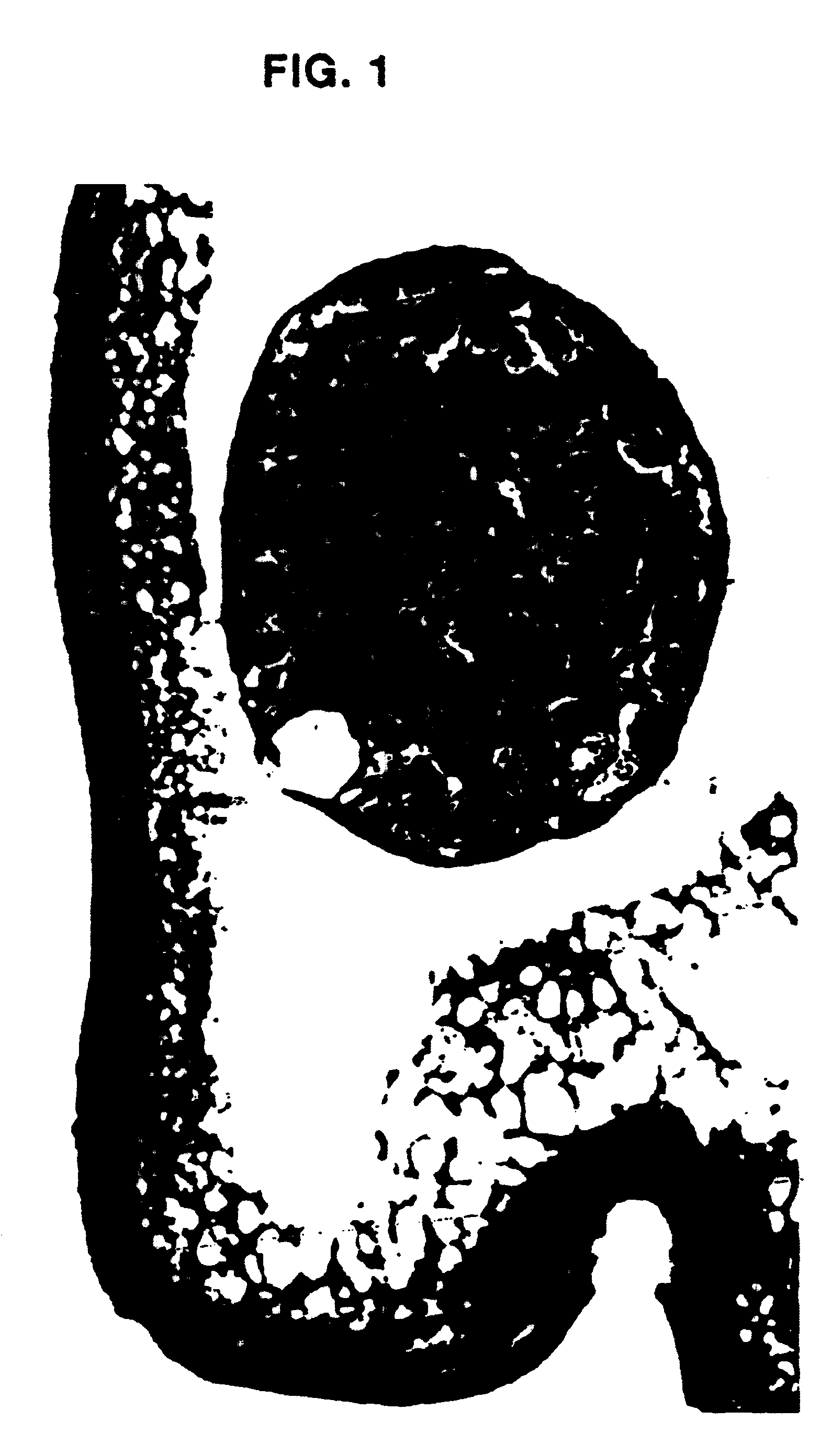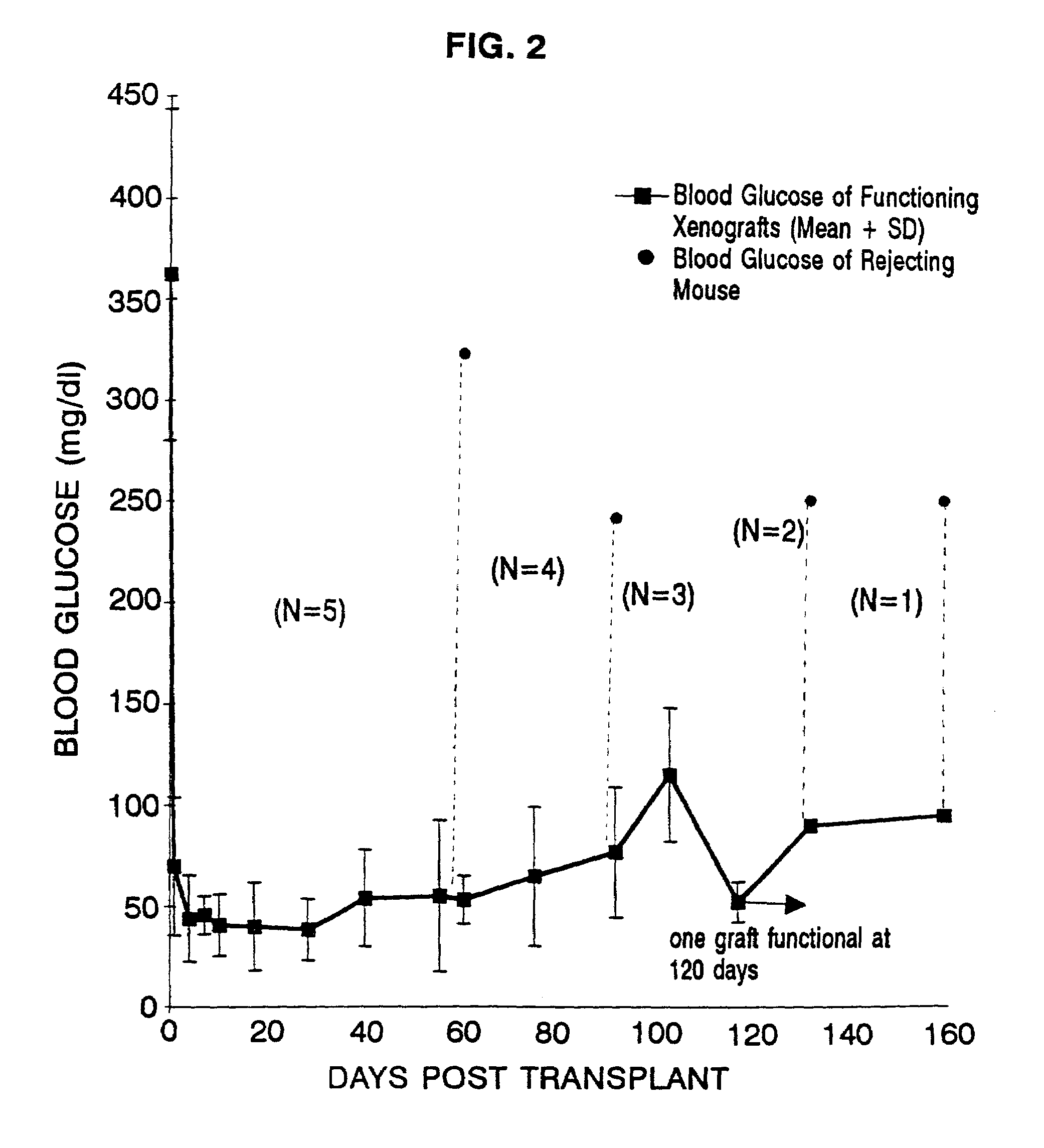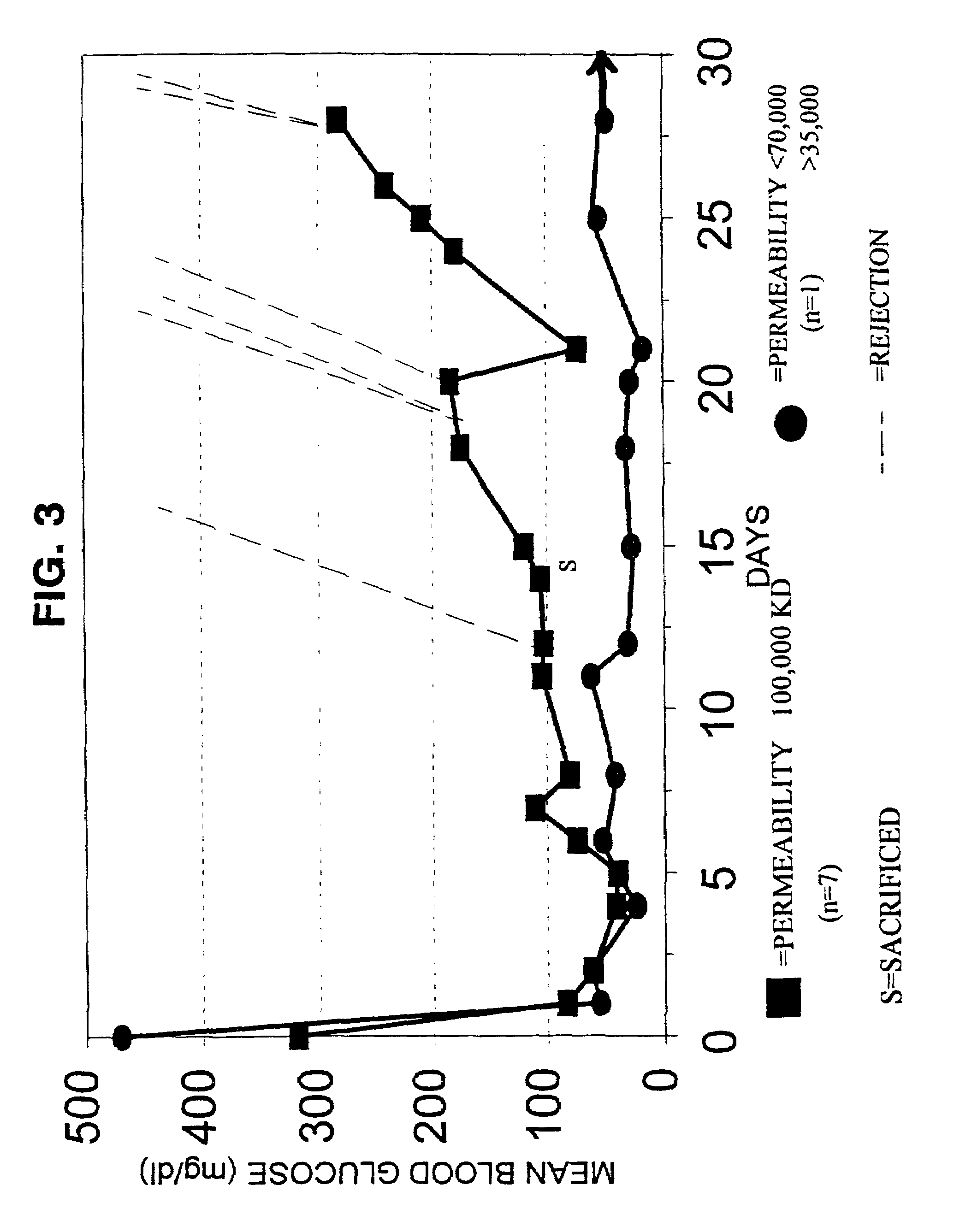Method of inhibiting immune system destruction of transplanted viable cells
- Summary
- Abstract
- Description
- Claims
- Application Information
AI Technical Summary
Benefits of technology
Problems solved by technology
Method used
Image
Examples
Embodiment Construction
[0096]This invention provides a method of inhibiting viable cells transplanted into a subject from being destroyed by the subject's immune system which comprises: a) containing the viable cells, or tissue comprising the viable cells, prior to transplantation within a device comprising a semipermeable membrane; and b) treating the subject with a substance which inhibits an immune-system costimulation event in an amount effective to inhibit the subject's immune system from responding to said contained cells or tissue.
[0097]As used herein, an “immune-system costimulation event” is an interaction between an APC and a T-cell required in conjunction with the binding of an MHC-bound antigen on the surface of the APC to the T cell receptor. As used herein, APCs are “antigen presenting cells”, which are known to those of skill in the art. Immune-system costimulation events include any specific binding of an APC cell-surface molecule (other than an MHC-bound antigen) to a specific ligand on a...
PUM
| Property | Measurement | Unit |
|---|---|---|
| Fraction | aaaaa | aaaaa |
| Fraction | aaaaa | aaaaa |
| Time | aaaaa | aaaaa |
Abstract
Description
Claims
Application Information
 Login to View More
Login to View More - R&D
- Intellectual Property
- Life Sciences
- Materials
- Tech Scout
- Unparalleled Data Quality
- Higher Quality Content
- 60% Fewer Hallucinations
Browse by: Latest US Patents, China's latest patents, Technical Efficacy Thesaurus, Application Domain, Technology Topic, Popular Technical Reports.
© 2025 PatSnap. All rights reserved.Legal|Privacy policy|Modern Slavery Act Transparency Statement|Sitemap|About US| Contact US: help@patsnap.com



